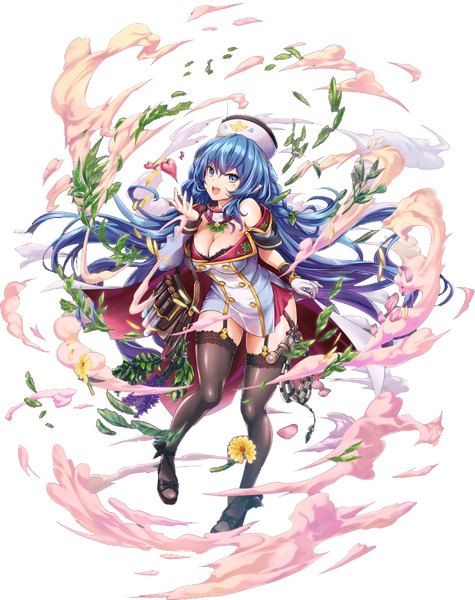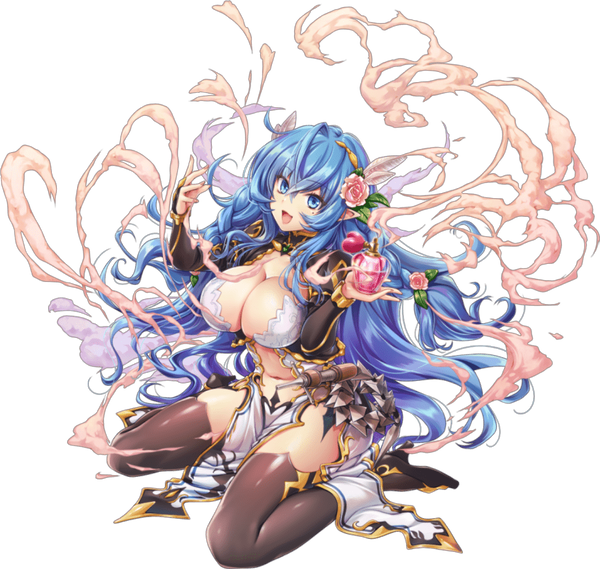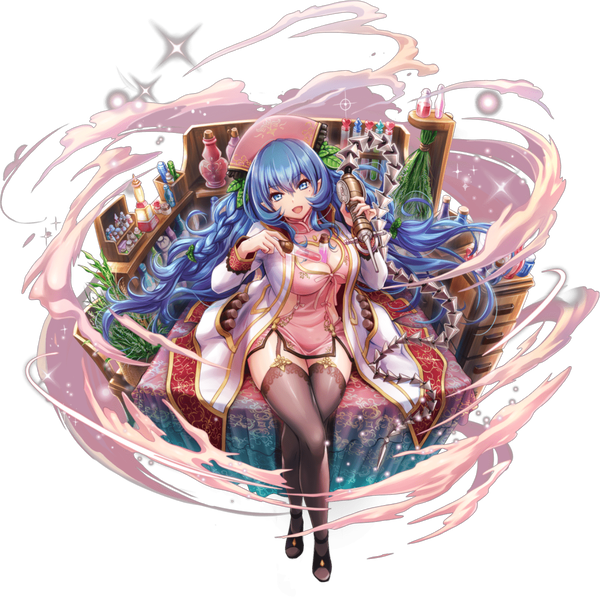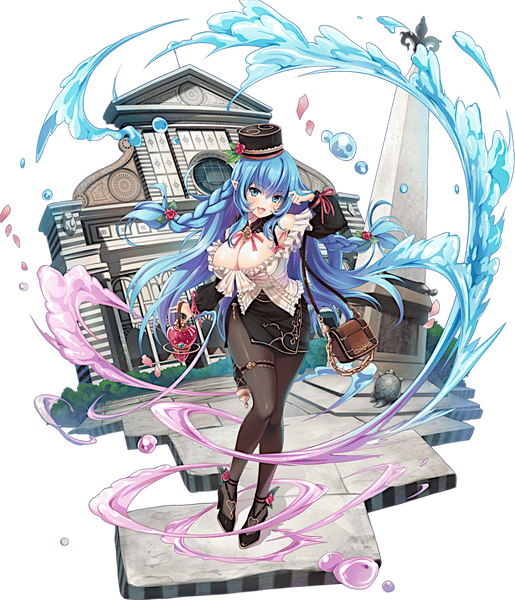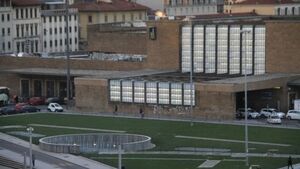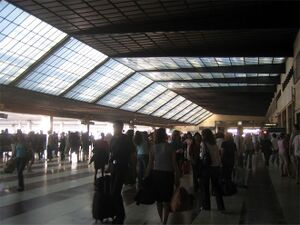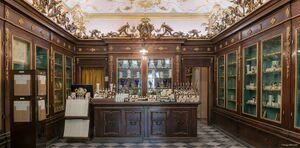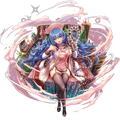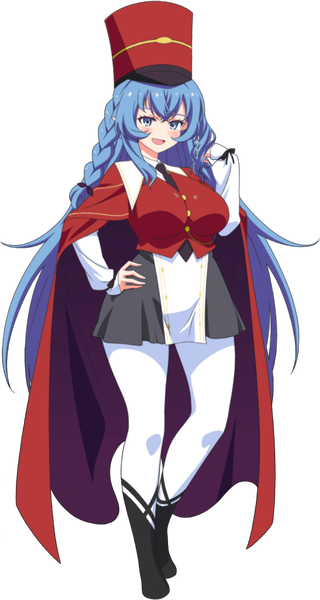
Novella
| Novella | |||||
|---|---|---|---|---|---|
| Japanese Name | ノヴェラ | ||||
| Weapon | |||||
| Race | Elf | ||||
| Nationality | |||||
| Birthday | December 3 | ||||
| Constellation | Sagittarius | ||||
| Talents | Making medicines, Making perfume | ||||
| Likes | The female form | ||||
| Dislikes | Men that touch women too friendly | ||||
| Strengths | Able to get along with anyone that's a woman | ||||
| Weaknesses | The fact that she touches women too much | ||||
| Hobbies | Flirting, Getting physical with girls | ||||
I'm Novella of the Verforet Military. I'm a pharmacist, so I'm real good at making medicines and perfumes. By the way, have you seen Vivienne? I have this love potion, errr I mean perfume, that I want her to try out. I'm sure she'd like it...
Layers
| Icon | Title | Release Date | Where to Obtain |
|---|---|---|---|
| [Girl-Loving Pharmacist] Novella | 2021 August 30 (EN) | Premium Gacha | |
| [Enchanting Fingers] Novella | 2021 August 30 (EN) | Premium Gacha | |
| [Bewitching Fragrance] Novella | 2022 February 24 | [Undercover Mission and the Steel Mechanic] Limited Gacha | |
| [Deceiving Aroma] Novella | 2022 April 22 (EN) | [Falling Cherry Blossoms in the Village of Nishiki] Limited Gacha | |
| [Dress Up Once in a While] Novella | 2024 May 16 | [Let It Be a Vivid Fashion Revolution] Pick Up Gacha, Premium Gacha |
Owned Skills
Trivia
- Novella's birthday is date of Lorenzo de' Medici and his brother Giuliano's succession as rulers of Florence, Italy in 1468. Lorenzo de' Medici is best known as a patron who sponsored artists such as Botticelli and Michelangelo, at the peak of the Renaissance.
- Novella's design is based off the Pharmacy of Santa Maria Novella (Officina profumo-farmaceutica di Santa Maria Novella), the first and oldest pharmacy in the world.
- Novella's medic and perfume maker theme is a reference to the actions of the monks of the Dominican order of Florence during the Black Death in Florence. Perfume was a sign of health and religious protection in Italy: the monks made huge batches of rosewater distillate to disinfect homes.
- Novella's attempt to woo Vivienne may be a reference to the Medici family's long relationship with the royalty of France from the 16th to 18th centuries. The Medici family were the rulers of the region of Florence around this era. Catherine de Medici commissioned the perfume in Pharmacy of Santa Maria Novella from that she would bring to the Court of France at the marrying age of 14, becoming the wife of Henry II of France.
- Novella's finger of God, also called "Novella Finger", may be a reference to Michelangelo's painting - the Creation of Adams. Michelangelo was an Italian sculptor, painter, architect and poet of the High Renaissance born in the Republic of Florence.
- The background of [Enchanting Aroma] features the apothecary and cashier counter of the Pharmacy of Santa Maria Novella.
- The building in the background of [Dress Up Once in a While] is the Piazza di Santa Maria Novella, the public square that has the church of Santa Maria Novella, located directly next to Santa Maria Novella train station. The location does also feature sculpted tortoises.
Counterpart
Stazione di Santa Maria Novella is a terminus railway station in Florence, Italy. The station is used by 59 million people every year and is one of the busiest in Italy. It is at the northern end of the Florence–Rome high-speed railway line Direttissima, which was completed on 26 May 1992 and the southern end of the Bologna–Florence railway line, opened on 22 April 1934. A new high speed line to Bologna opened on 13 December 2009. The station is also used by regional trains on lines connecting to: Pisa, Livorno (Leopolda railway); Lucca, Viareggio (Viareggio–Florence railway); Bologna (Bologna–Florence railway) and Faenza (Faentina railway).
The station was designed in 1932 by a group of architects known as the Gruppo Toscano (Tuscan Group) of which Giovanni Michelucci and Italo Gamberini, Berardi, Baroni, Lusanna were among the members; the building was constructed between 1932 and 1934. The plan of the building, as seen from above, looks as if it were based on the fascio littorio, the symbol of Benito Mussolini's National Fascist Party, many documents give this explanation, but, that shape was forced by the pre-existing station. The "blade" represented by the first two-passenger tracks and the postal ones were in fact the extension of the 1861 alignment which included the tracks of the line from Livorno.
The building is a prime example of Italian modernism, but has little to do with the Italian Rationalism movement, being more strongly influenced by the Viennese architecture of Loos and Hoffman, with perhaps a nod to Wright; but it is the building's complete originality that makes it outstanding. The competition to design the station was controversial but the approval by Mussolini of the Gruppo Toscano project was hailed as an official acceptance of modernity. The station was designed to replace the aging Maria Antonia Station, one of the few example of architecture by I. K. Brunel in Italy, and to serve as a gateway to the city centre. Wikipedia
The Perfume-Pharmaceutical Workshop of Santa Maria Novella (Officina profumo-farmaceutica di Santa Maria Novella), also known as Pharmacy of Santa Maria Novella, is located in via della Scala 16 in Florence, in a part of the region of Santa Maria Novella. It is considered the first pharmacy in the world, and also the oldest historical pharmacy in all of Europe, having been continuously open for business for over four centuries.
As early as 1381, there exists documentation on how the Dominicans of Santa Maria Novella sold rose water as a disinfectant, used especially in times of epidemics. The friars cultivated medicinal plants (from which the name of the Semplici garden derives) in an adjacent garden, distilled herbs and flowers, prepared essences, elixirs, ointments, and balms. The simple garden supplied the closest and twin Pharmacy of San Marco, which was also founded and managed by the Dominican friars.
The ancient apothecary, now no longer a pharmacy, but a perfumery and herbalist's shop, still exists to this day, with antique decorations and furnishings dating back to various eras. It also preserves a valuable collection of scientific devices over the centuries, such as thermometers, mortars, scales, and measuring cups, as well as precious apothecary jars from the seventeenth to the twentieth century. Wikipedia
Map
Gallery
- Pages using Tabber parser tag
- Pages using DynamicPageList3 parser tag
- Weapon Whip
- Elf
- Verforet
- Sagittarius
- Element Blow
- Element Wind
- Train Knights
- Italy

